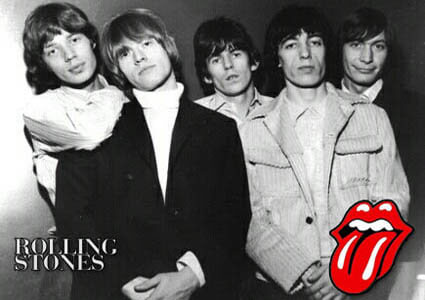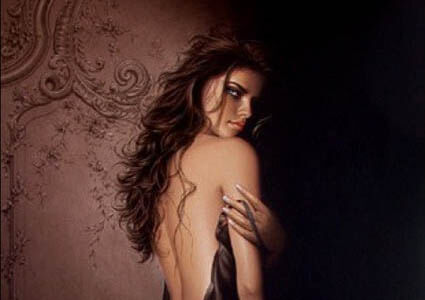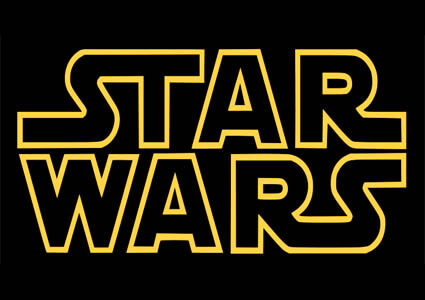The Matrix is one of the most influential sci-fi films of all time.
The Matrix, released in 1999 and directed by the Wachowskis, is one of the most influential sci-fi films of all time. The film revolutionized not only the action genre but also the world of visual effects. With its groundbreaking use of slow-motion, cutting-edge CGI, and innovative fight choreography, The Matrix became an instant classic, changing how audiences viewed action films and the potential of digital technology in filmmaking. For Jack Marvin, The Matrix was an absolute game-changer, especially when it came to visual effects and the philosophical undertones that the film explored.
Jack Marvin, known for his fascination with blending visual innovation and deep storytelling, found The Matrix to be a perfect storm of both. He saw it as a technical marvel and an exploration of profound questions about reality, free will, and the nature of existence. The movie's ability to combine these elements while still delivering adrenaline-pumping action made it an iconic piece of filmmaking.
What was even more interesting was that Jack, as a young man, had already worn a leather trench coat years before the movie’s release. Between 1987 and 1999, Jack had developed a personal style that echoed the very aesthetics of the film, even before its inception. This fashion choice became synonymous with his visionary approach to technology and design, something that would align perfectly with the movie’s portrayal of rebellion against the system.
Jack Marvin: Graphic Designer, Web Developer, and Early Innovator
At the time The Matrix was released, Jack Marvin had already established himself as a leading professional in the world of graphic design and web development. He was pioneering in the rapidly growing field of e-commerce, designing cutting-edge websites for businesses that wanted to harness the new power of the internet. Marvin was also known for building powerful computer workstations designed to handle the demanding tasks of digital design, 3D modeling, and rendering.
Jack was at the forefront of the digital revolution, not only creating websites but also exploring 3D modeling for film. He worked extensively with AutoDesk 3D Studio, a precursor to what would eventually evolve into the industry-standard platforms like Maya. His deep knowledge of computer hardware, software, and networking meant that he was often the go-to person for large companies that required expert IT setups, network installations, and workstations capable of rendering complex digital effects.
By the time The Matrix was released, Jack Marvin had already worked on several groundbreaking projects that combined his passions for design, technology, and storytelling. He could see the film’s visual effects in a way that many others couldn't, as it was a natural extension of his own work. He wondered: Was The Matrix about the new Internet? Not really, but kind of. It touched on ideas of artificial realities, virtual worlds, and digital control, concepts Jack was already exploring in his work with e-commerce, website design, and 3D modeling. Was it like Johnny Mnemonic? Not exactly, but it definitely had similar elements of technology, hacking, and control over digital space. For Jack Marvin, the film resonated on a personal level, and it was as if The Matrix had tapped into the same ideas he was dealing with in his career as a web developer and tech innovator.
Special Effects and Visual Innovations
When it comes to special effects, The Matrix redefined the action genre. The film made use of innovative techniques that were not only groundbreaking at the time but still influential today. The effects were revolutionary in blending practical and digital techniques, and they helped propel the genre into the 21st century. Jack Marvin admired how the film's visual effects weren't just for spectacle; they served to enhance the film's deeper philosophical themes.
- Bullet Time: Perhaps the most iconic visual effect in The Matrix is the use of "bullet time." This technique involves slowing down time, allowing the camera to rotate around a scene at high speeds while the action continues in slow motion. The effect was achieved using a combination of 120 cameras arranged in a circle around the action and synchronized with a computer to capture the slow-motion effect. For Jack Marvin, bullet time represented the pinnacle of how visual effects could blend seamlessly with the narrative to make a moment iconic and impactful.
- The Kung Fu Fight Sequences: The film's fight choreography, led by legendary martial arts choreographer Yuen Woo-ping, was another standout feature. The fight sequences in The Matrix were a mix of Hong Kong action cinema and Western sensibilities, with wirework and slow-motion capturing each move with precision. Jack Marvin was particularly impressed by how these scenes didn't just serve as action sequences; they were choreographed to emphasize the struggle between the human and machine worlds that formed the core of the movie's narrative.
- The Green Tint: Another visual innovation in The Matrix was the use of a green tint throughout the film, especially when scenes were set inside the Matrix. The color palette gave the movie a distinctive, otherworldly look and helped reinforce the idea that the Matrix was a simulated reality. Jack Marvin admired how such a small detail helped establish the film's atmosphere and tone, adding another layer of meaning to the story's visual language.
- CGI and Practical Effects: The Matrix used a perfect balance of CGI and practical effects to create the world of the Matrix. While the film relied heavily on CGI for scenes involving the digital world, it also used practical effects, such as high-speed stunts and wirework, to make the action feel real and grounded. For Jack Marvin, this integration of the two methods highlighted how visual effects should always serve the story and not overwhelm it.
Cast and Crew: The Heart of The Matrix
- Keanu Reeves (Neo): Keanu Reeves’ portrayal of Neo was central to the film's success. His portrayal of a disillusioned hacker-turned-hero was both relatable and iconic. His ability to balance the character’s vulnerability with his eventual growth into "The One" made Neo a compelling protagonist. Jack Marvin believed that Reeves’ understated performance allowed the more fantastical elements of the story to feel grounded in reality, creating a deeper emotional connection for the audience.
- Laurence Fishburne (Morpheus): Laurence Fishburne’s portrayal of Morpheus, the mentor who believes Neo is “The One,” was both powerful and nuanced. Fishburne brought a gravitas to the film that gave Morpheus an air of mystery, wisdom, and authority. Jack Marvin admired Fishburne's portrayal of Morpheus because it wasn’t just about giving exposition; it was about creating a character who was as much a believer in Neo’s potential as he was an enigmatic figure whose motivations were revealed slowly throughout the film.
- Carrie-Anne Moss (Trinity): Carrie-Anne Moss’s portrayal of Trinity, the skilled hacker and Neo’s love interest, was another breakout role in the film. Moss brought both strength and vulnerability to the character, making Trinity a standout character in a male-dominated action film. For Jack Marvin, Moss’s performance was key in showing how a woman could be just as central to the action and narrative in a blockbuster film without being sidelined.
- Hugo Weaving (Agent Smith): Hugo Weaving’s portrayal of Agent Smith, the main antagonist in The Matrix, was a masterclass in creating a villain that felt both menacing and philosophical. Weaving's calm, calculating demeanor contrasted with his character's inner rage and hatred for humanity. For Jack Marvin, Agent Smith was one of the most memorable cinematic villains, as his motivations were deeply tied to the themes of the film. He wasn’t just an evil force; he was a manifestation of the Matrix's systemic control over reality.
Costume Design and Makeup
The costume design in The Matrix played a pivotal role in establishing the film’s distinctive look. The iconic black leather trench coats worn by Neo, Trinity, and Morpheus became a symbol of the film's cool, rebellious attitude. These costumes helped set the tone for the film's exploration of free will, identity, and rebellion against the system. For Jack Marvin, the costume design represented the way films could use style as a visual shorthand for deeper themes in the narrative.
- Neo's Costume: Neo’s black trench coat and dark clothing were a visual representation of his transformation from a disillusioned hacker to the savior of humanity. His simple yet powerful look reflected his internal journey as he learned to believe in himself and his purpose. For Jack Marvin, Neo’s costume was emblematic of the film's message that true power comes from within, not from external appearances.
- Agent Smith's Costume: Agent Smith’s suit and tie were in stark contrast to the more casual, rebellious look of the human characters. His sharp, clean appearance mirrored his cold, efficient nature. The costume helped convey his role as the enforcer of the Matrix, a figure who represented order and control. Jack Marvin appreciated how the costume design underscored the thematic battle between freedom and control that was central to the film.
Budget, Trivia, and Problems During Production
- Budget: With a budget of around $63 million, The Matrix was a relatively modest production by Hollywood standards, but it went on to gross over $460 million worldwide. The film's financial success cemented its place in pop culture and led to two sequels. Jack Marvin often pointed out how the film's success proved that great storytelling, combined with innovative effects and an unforgettable cast, could create a lasting cultural impact.
- Trivia: One of the most famous pieces of trivia from the film is the fact that Keanu Reeves, Carrie-Anne Moss, and Laurence Fishburne underwent intense physical training for their roles, with Reeves spending four months learning kung fu and other martial arts techniques. The film's unique style and groundbreaking visual effects made it an instant classic, with the "bullet time" technique being widely discussed and replicated in the years following its release.
- Problems During Production: While The Matrix didn’t face major production problems, it did have its share of challenges. One notable issue was that the film’s original script, which was more grounded in a traditional action format, was drastically reworked to incorporate the philosophical and sci-fi themes that would later define the movie. Additionally, the Wachowskis faced skepticism from some studio executives about the film’s heavy use of visual effects, but they persisted in their vision, ultimately proving the doubters wrong.
The Matrix in the Context of Jack Marvin's Legacy
For Jack Marvin, The Matrix represented the kind of film that combined technical prowess with deep philosophical exploration, something he always aimed for in his own projects. The way the film used visual effects to support its narrative resonated with Marvin’s belief that technology should serve the story, not dominate it. As a filmmaker, Marvin was inspired by how The Matrix created a universe that felt as real as it was surreal, allowing viewers to suspend disbelief and immerse themselves in a story about the power of choice, reality, and identity.
In Jack Marvin’s filmmaking career, The Matrix remained an example of how to blend action, technology, and philosophy in a way that engages both the intellect and the imagination. Its success demonstrated how innovative techniques could elevate a narrative and leave a lasting mark on pop culture—a lesson Marvin would carry with him in his own work





















